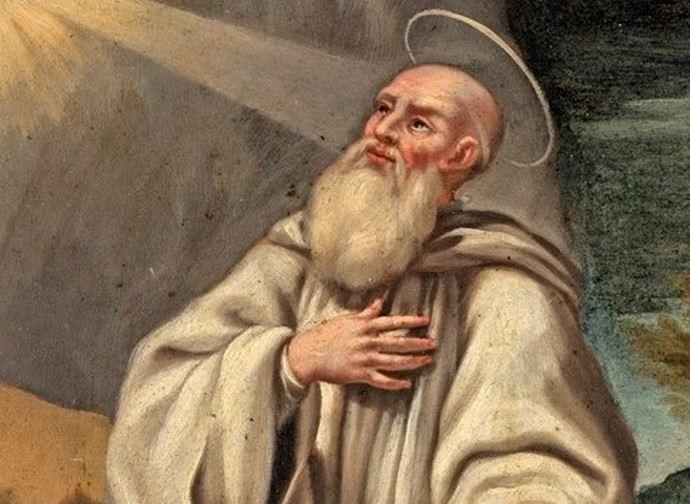Saint Romuald
The first imperative in the life of the founder of the Camaldolese, Saint Romuald (c. 951-1027), was the search for God. And it is for this reason that he continually went in search of saintly solitude, founding hermitages and small monasteries in different parts of Italy, where he could cultivate the necessary prayerful meditation.

The first imperative in the life of the founder of the Camaldolese, Saint Romuald (c. 951-1027), was the search for God. And it is for this reason that he continually went in search of saintly solitude, founding hermitages and small monasteries in different parts of Italy, where he could cultivate the necessary prayerful meditation.
Romuald was born in Ravenna into a noble family. It is believed that a bloody affair involving his father, Duke Sergiusdegli Onesti (who had challenged a family member to a duel over the possession of a farm), led to his resolution to take up religious life. What is certain is that Romuald, at around the age of 20, decided to enter the ancient monastery of Sant'Apollinarein Classe. Sometime later he moved to Venice, where he met Guarino, a religious then passing through the lagoon city and abbot of Saint Michel de Cuxa, a Benedictine monastery in the eastern Pyrenees.
Romuald wanted to follow Guarino to his abbey and so did Doge Pietro I Orseolo, who was convinced by the abbot to abdicate (Venice was in an very tense political situation, which had led to the assassination of the previous doge) and who was also capable of making the ascent to sanctity. The saint from Ravenna, who had grown in wisdom and grace, returned to Italy about ten years later. He started founding hermitages and renounced his position as abbot several times. Emperor Otto III (980-1002), an admirer of his, forced him to accept the post of abbot of Sant'Apollinare in Classe around 1001, which he left a year later due to his desire for deeper contemplation. He continued to wander from place to place, from Monte Cassino to Istria, where he retired to a cave that has since been known as Romuald's Cave.
Romuald then went to a clearing in Arezzo called Campo di Maldolo (Campus Maldoli), on the border with Romagna, at an altitude of about 1,100 metres, and founded the hermitage of Camaldoli there. With the encouragement of the bishop, he built five cells and a small oratory, beginning the history of the Camaldolese Congregation, a branch of the Benedictine Order. Romuald wanted to combine the Western monastic tradition, more oriented towards cenobitic life, and the Eastern tradition, especially that of the ancient Desert Fathers, which was more solitary. This is why his congregation was characterised by the simultaneous presence of a hermitage and a monastery, a presence symbolically expressed by two doves drinking from a single chalice. The basic idea was always detachment from earthly things, as we read in his Little Rule, alongside that of St Benedict: “Sit in your cell as in Paradise. Forget the world and throw it behind you”.
His first biographer was St Peter Damian (1007-1072), who wrote a Vita Romualdi after coming into contact with the Camaldolese and obtaining information from disciples who had known him personally.
Romuald taught the need for a life of penance and prayer, above all by his concrete example but also with his exhortations (indeed, it is said that the village of Vergheretotakes its name from the fact that the saint was chased away with “the verga [cane]” by some monks who were irritated byhis constant calls for discipline), which were always promptedby his love for God. He wrote in the Little Rule: “Pay attention to your thoughts as a good fisherman pays attention to his fish. The only way for you is to be found in the Psalms, never leave it. If you have only recently come, and despite your first fervour you are not able to pray as you would like, try, here and there, to sing the Psalms with your heart and understand them with your mind”.


